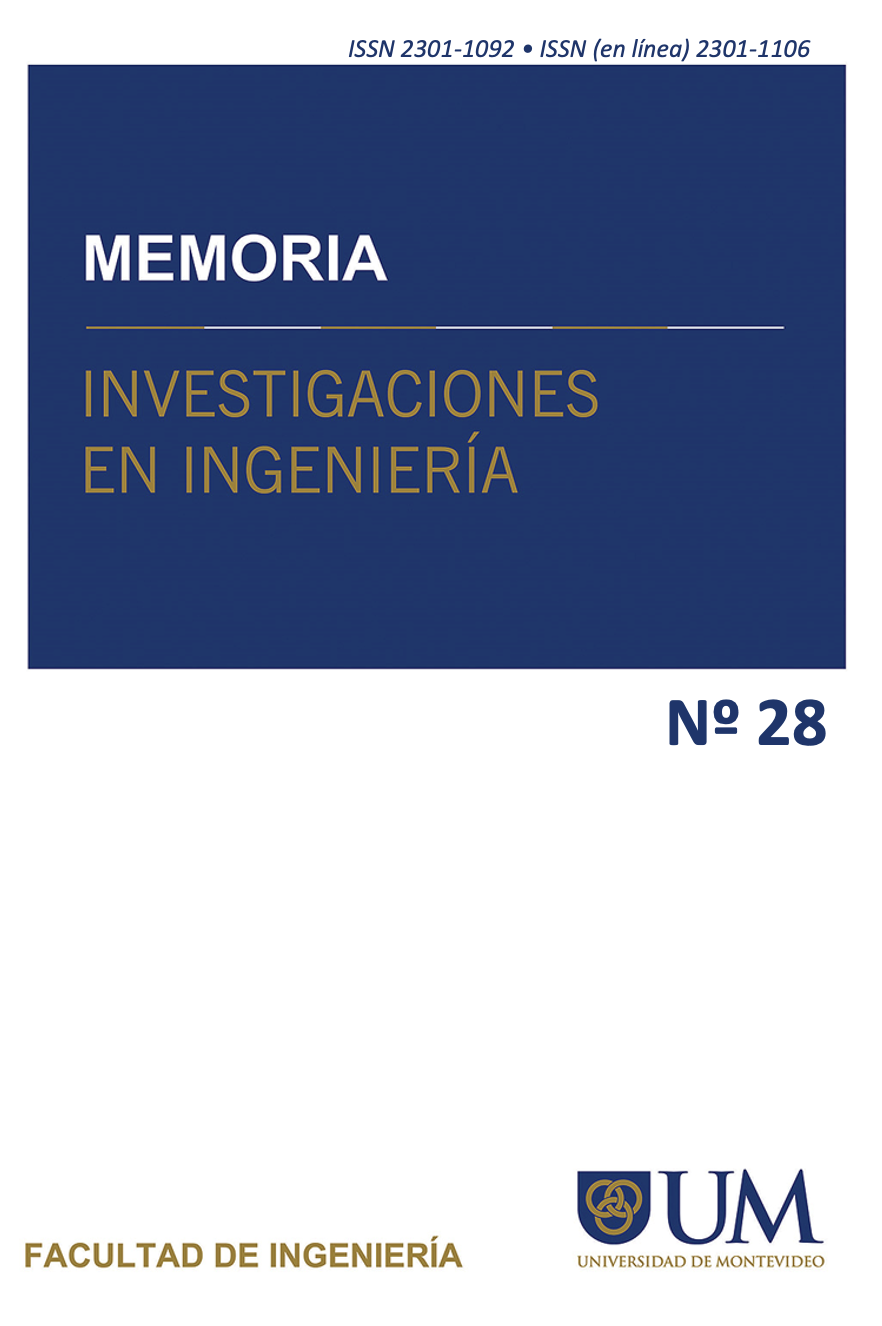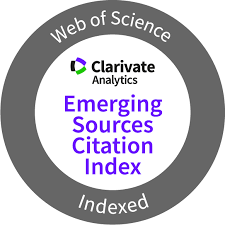Caracterização mecânica de juntas soldadas TIG Al 6082-T6 pós-soldagem temperada
DOI:
https://doi.org/10.36561/ING.28.6Palavras-chave:
Soldagem TIG, propriedades mecânicas, Al 6082-T6, meios de têmperaResumo
Esta pesquisa visa aumentar a eficiência de juntas soldadas por meio de uma metodologia econômica. O alumínio 6082-T6 é o material escolhido devido ao seu uso frequente em aplicações que exigem resistência intermediária com baixo peso. As operações de soldagem normalmente levam a um enfraquecimento da resistência do material em até 50% devido ao alto calor de entrada. Portanto, o foco deste estudo é melhorar a resistência empregando técnicas de têmpera com diferentes meios, como areia, água e óleo hidráulico. Uma análise comparativa das propriedades mecânicas é realizada com base na têmpera de juntas soldadas usando esses vários meios. Além disso, o exame da microestrutura é realizado para facilitar este estudo comparativo. As propriedades mecânicas investigadas incluem dureza, resistência à tração, resistência ao escoamento e tenacidade, com o objetivo de compreender o impacto de diferentes meios de têmpera. A pesquisa revela que juntas resfriadas a água apresentam maior resistência ao escoamento, enquanto juntas resfriadas a óleo demonstram resistência à tração superior em comparação com outras juntas. Além disso, a ductilidade das juntas resfriadas a óleo é notavelmente maior, medida pela % de alongamento. O resfriamento a água resulta em dureza notável tanto na Zona de Solda (ZS) quanto na Zona Afetada pelo Calor (ZAC) devido ao resfriamento rápido. Em contraste, a dureza das juntas resfriadas a óleo não é significativamente diferente daquela das juntas soldadas resfriadas a água. Em relação à tenacidade, as juntas resfriadas a óleo apresentam maior energia de impacto na ZAC em comparação àquelas temperadas com água, areia e ar. No entanto, na ZC, as juntas resfriadas a ar exibem energia de impacto superior, o que indica diretamente melhores propriedades de tenacidade. Portanto, as juntas resfriadas a óleo apresentam maior tenacidade na ZAC, enquanto as juntas resfriadas a ar são mais tenazes na ZC. No geral, as propriedades mecânicas das juntas resfriadas a óleo são significativamente aprimoradas, levando a uma eficiência de soldagem aprimorada de 55% para 72%.
Downloads
Referências
Baskutis, S., Bendikiene, R., & Ciuplys, A. (2019). Effect of weld parameters on mechanical properties and tensile behavior of tungsten inert gas welded AW6082-T6 aluminum alloy. Journal of Mechanical Science and Technology, 33(2), 765–772. DOI: https://doi.org/10.1007/s12206-019-0131-6
Kaba, L., Djeghlal, M. E., Ouallam, S., & Kahla, S. (2021). Dissimilar welding of aluminum alloys 2024 T3 and 7075 T6 by TIG process with double tungsten electrodes. International Journal of Advanced Manufacturing Technology, 118, 937–948. DOI: https://doi.org/10.1007/s00170-021-07888-5
Kumar, A., & Sundarrajan, S. (2009). Effect of welding parameters on mechanical properties and optimization of pulsed TIG welding of Al-Mg-Si alloy. International Journal of Advanced Manufacturing Technology, 42(1-2), 118–125. DOI: https://doi.org/10.1007/s00170-008-1572-8
Kumar, K., Kumar, C. S., Masanta, M., & Pradhan, S. (2022). A review on TIG welding technology variants and its effect on weld geometry. Materials Today: Proceedings, 50, 999-1004. DOI: https://doi.org/10.1016/j.matpr.2021.07.308
Li, J.-f., Zheng, Z.-q., Na, J., & Tan, C.-y. (2005). Localized corrosion mechanism of 2XXX series Al alloy containing S(Al2CuMg) and (Al2Cu) precipitates in 4.0% NaCl solution at pH 6.1. Journal of Materials Chemistry and Physics, 91, 325−329. DOI: https://doi.org/10.1016/j.matchemphys.2004.11.034
Miao, W. F., & Laughlin, D. E. (1999). Precipitation hardening in aluminum alloy 6022. Elsevier Science, 40(7), 873–878. DOI: https://doi.org/10.1016/S1359-6462(99)00046-9
Murali, N., & Li, X. (2021). TIG welding of dissimilar high-strength aluminum alloys 6061 and 7075 with nano-treated filler wires. In L. Perander (Ed.), The Minerals, Metals & Materials Series. Springer. DOI: https://doi.org/10.1007/978-3-030-65396-5_47
Muzamil, M., Wu, J., Samiuddin, M., Majeed, A., Siddiqui, S. U., & Mudassir, M. (2020). Macro-mechanical behavior of unique surface welded joints (AA5083) utilizing tungsten inert gas welding against single-stage homogenization annealing. Revista de Metalurgia, 56(3), e173. DOI: https://doi.org/10.3989/revmetalm.173
Prabhukhot, A. R., & Prasad, K. (2015). Effect of heat treatment on hardness of 6082-T6 aluminum alloy. International Journal of Scientific & Engineering Research, 6.
Rajkumar, T., Prabakara, M. P., Arunkumar, G., & Antony, A. G. (2020). Study on the feasibility in welding of low carbon steel and austenitic stainless steel joint using CO2 laser welding process and analysis of its metallurgical and mechanical properties. Wu Tan Hua Tan Ji Suan Ji Shu, 106(5), 471–476.
Rajkumar, T., Raja, K., Lingadurai, K., Vetrivel, S. D., & Antony, A. G. (2020). Interfacial microstructure analysis of AA2024 welded joints by friction stir welding. Journal of New Materials for Electrochemical Systems, 23(2), 123–132. DOI: https://doi.org/10.14447/jnmes.v23i2.a09
Reboul, M. C., & Baroux, B. (2011). Metallurgical aspects of corrosion resistance of aluminum alloys. Journal of Materials and Corrosion, 62, 215−233. DOI: https://doi.org/10.1002/maco.201005650
Shazad, A., Astif, M., Uzair, M., & Zaidi, A. A. (2024). Evaluation of preheating impact on weld residual stresses in AH-36 steel using Finite Element Analysis. Memoria Investigaciones en Ingeniería, (26), 225-243. DOI: https://doi.org/10.36561/ING.26.14
Shazad, A., Jadoon, J., Uzair, M., & Akhtar, M. (2022). Effect of composition and microstructure on the rusting of MS Rebars and ultimately their impact on mechanical behavior. Transactions of the Canadian Society for Mechanical Engineering. DOI: https://doi.org/10.1139/tcsme-2021-0207
Shazad, A., Uzair, M., Jamil, T., & Muhammad, N. (2024, December). A Comparative Study on the Joint Hardness and tensile properties of Dissimilar Aluminum Alloy using Tungsten Inert Gas (TIG) Welding. In 4th International Conference on Key Enabling Technologies (KEYTECH 2024) (pp. 173-178). Atlantis Press. DOI: https://doi.org/10.2991/978-94-6463-602-4_25
Shazad, A., Uzair, M., & Tufail, M. (2024). Influence of multiple post-weld repairs on mechanical and microstructural properties of butt weld joint utilized in structural members. International Journal of Precision Engineering and Manufacturing, 1, 1–8. DOI: https://doi.org/10.1007/s12541-024-01104-6
Sathish, T., Armalingam, S., Mohanavel, V., et al. (2021). Weldability investigation and optimization of process variables for TIG-welded aluminum alloy. Advances in Materials Science and Engineering. DOI: https://doi.org/10.1155/2021/2816338
Tan, C. F., & Said, M. R. (2009). Effect of hardness test on precipitation hardening aluminum alloy 6061-T6. Science Journal, 36(3), 276–286.
Zhu, J., Jiang, W., Li, G., Guan, F., Yu, Y., & Fan, Z. (2020). Microstructure and mechanical properties of SiCnp/Al6082 aluminum matrix composites prepared by squeeze casting combined with stir casting. Journal of Materials Processing Technology, 283, 116699. DOI: https://doi.org/10.1016/j.jmatprotec.2020.116699
Publicado
Como Citar
Edição
Seção
Licença

Este trabalho está licenciado sob uma licença Creative Commons Attribution 4.0 International License.






















